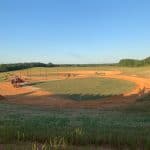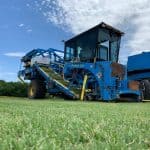Category: Uncategorized
FireFly Harvesting
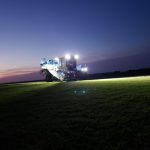
Come check out our Firefly! You can see it here cutting Celebration Bermuda Grass on our farm. Keeping up with new innovation is a challenge but rewarding especially in these uncertain times.
https://www.unruhturf.com/home/turf33/wp/wp-content/uploads/First-FireFly-Vid.mp4
Celebration Bermuda Grass
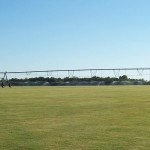
We provide turf grass services and products in north-east Texas, including Natural Grass, quality sod and sprigs. In addition we deliver to Dallas/Fort Worth, Tyler, Longview, and Texarkana.
At our farm all our sod comes freshly cut, healthy, and treated for weeds and diseases.
Also we are licensed producers of the #1 Bermuda grass sod in the industry:
Celebration Bermuda Grass!
Benefits of a Healthy Lawn
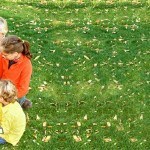
We all want to have a green, healthy lawn. The pleasures of beautiful grass–free of weeds or bugs–are many! Browse our website to find the type of sod that best suits your needs.
Eight Benefits of Natural Grass
Turfgrass can be found on lawns, athletic fields, golf courses, parks, roadsides and many other natural and recreational areas. It accounts for over 50 million acres of maintained, irrigated natural grass in the U.S. alone. Ongoing research continues to uncover previously unidentified environmental, economic, health and safety benefits of natural turfgrass.
- Air Quality
Turfgrass is a living organism. Each plant takes in carbon dioxide and converts it into simple sugars to use as food through the process of photosynthesis. As a byproduct of photosynthesis, oxygen is released into the atmosphere.
A turfgrass area measuring 2,500 square feet produces enough oxygen for a family of four to breathe. An average sized healthy lawn can capture as much as 300 pounds of carbon per year and a golf course fairway can capture 1,500 pounds per year. One soccer field can offset the carbon produced by a car driving 3,000 miles.
Because of this, Dr. Thomas Watschke of Penn State University states in “The Environmental Benefits of Turfgrass and Their Impact on the Greenhouse Effect” that “the strategic use of turfgrass is the most sensible and economically feasible approach to countering the greenhouse effect in urban areas.”
In addition to reducing carbon dioxide, turfgrass traps an estimated 12 million tons of dust and dirt released annually into the atmosphere.
- Pollution Filter
In 2013, an EPA Chesapeake Bay Program panel of experts concluded, based upon a review of extensive research, that a “dense vegetative cover of turfgrass” reduces pollution and runoff. More precisely, the average soccer field can absorb 50,000 gallons of water before runoff occurs. The fibrous root system stabilizes soil to reduce erosion and prevents the movement of sediment into creeks and rivers.
Additionally, studies have found the noise absorptive capacity of turfgrass is a significant part of how landscapes are effective in reducing noise pollution.
- Stormwater Management
Landscaped areas reduce pollutants from leaching through the soil into the water supply or from entering surface water runoff. Turf grasses filter storm water excess and reduce sediment and pollutants from entering water bodies. Turfgrass plants also redirect he flow of water, slowing it and allowing more water to be absorbed by the soil, which aids in preventing soil erosion and flooding.
Did you know a healthy, sodded lawn absorbs rainfall six times more effectively than a wheat field and four times better than a hay field?
- Heat
Environmental heating is reduced by turfgrass. On a hot summer day, a well maintained turfgrass area will be at least 30 degrees cooler than asphalt and 14 degrees cooler than bare soil.
The overall environmental cooling effect of turfgrass can be understood by comparing it to air conditioning. The average home has an air conditioner with a three or four ton capacity. The California Energy Commission has found the cooling effect of an average size lawn is equal to about nine tons of air conditioning. A single high school baseball field provides up to 70 tons of air conditioning. This cooling effect is beneficial for athletes and for reducing electrical needs for buildings and homes.
- Wellness and Stress
Green spaces have been shown to improve wellness and reduce stress. There is growing evidence that horticulture and natural grass found on sports fields and lawns is important on a human level. Plants lower blood pressure, reduce muscle tension related to stress, improve attention and reduce feelings of fear and anger or aggression.
In 2002, The University of California – Riverside conducted research to support that hospital stays are positively affected by turfgrass and green spaces. Patients in hospital rooms with a view of nature and lawns recover more quickly than similar patients in rooms with a view of building walls.
Similarly, people who live and work in an environment with a view of lawns and nature compared to an urban view, were found to recover from stress more quickly. Employees with a view of landscaped areas experience less job pressure, greater job satisfaction and fewer headaches than those who do not have a view or can only see manmade objects. Green spaces are also proven to increase work productivity.
Also related to wellness and stress, two surveys on Attention-Deficit/ Hyperactivity Disorder have shown that children active in green spaces, such as lawn areas, experience less severe symptoms. Another study published in “Environment and Behavior” indicated green spaces can enable children to think more clearly and cope more effectively with life’s stress.
- Therapeutic
The care of turfgrass and plants can have a positive, therapeutic effect and is included in many rehabilitation programs. These programs have been successfully used to treat certain illnesses, aid in the recovery of disabled people and help the elderly stay mobile. Programs have even been successfully implemented in prison systems, allowing inmates to acquire new, marketable skills that they can use when they return to civilian life.
- Community Appeal
Turfgrass and green spaces increase community appeal and improve property values. Smart Money magazine indicates that consumers value a landscaped home up to 11.3 percent higher than its base price. Additionally, it says one of the most cost effective ways to boost a home’s curb appeal is by attractively landscaping the yard. Well-manicured plots of land are one of the most important factors individuals and families consider when deciding where to live.
Green spaces create close-knit communities, which increases safety. Residents in landscaped areas tend to know their neighbors better, socialize more often and have stronger feelings of community when compared to residents living in more barren areas. Communities with trees and green spaces have lower crime, decreased police calls for domestic violence and decreased incidences of child abuse.
- Recreation and Sport
Turfgrass is used extensively for recreation and sport as well as providing places where adults, kids and pets can spend time outside the home. About 80 million people in the U.S. over the age of seven play sports on turfgrasses. The majority of professional athletes prefer to play on natural grass surfaces.
Providing places for recreation and encouraging activity is especially important with the Centers for Disease Control and Prevention reporting over one third of U.S. adults and 17 percent of American children and adolescents as obese. Recreational activities also provide children and adults leisure time in a positive and safe environment.

